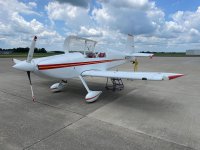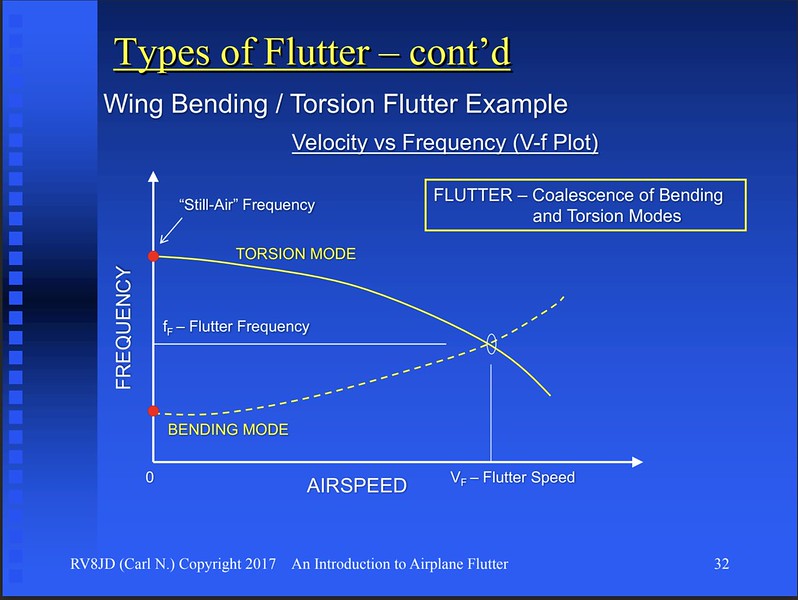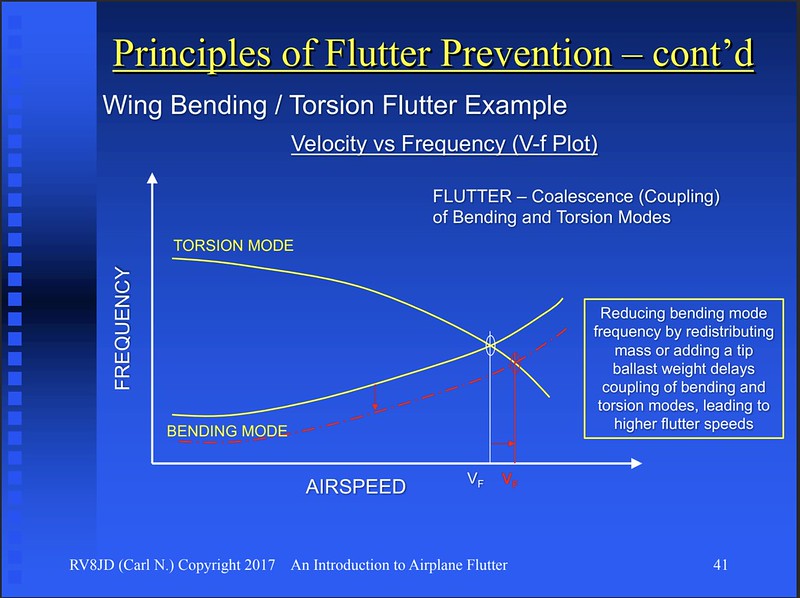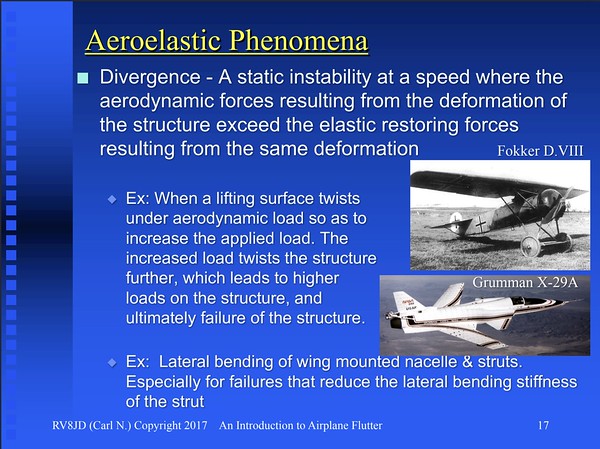The effect of tip tanks on flutter margins
To the point; will adding weight to the tips exacerbate aeroelastic flutter?
The effect of tip tanks on flutter margins, all other things being unchanged. Some comments in very general terms regarding basic wing bending/torsion flutter:
1) The weight of the tip tank and fuel reduces the frequency of the first wing bending mode. This further separates the first wing bending mode frequency from the first wing torsion mode frequency and delays coupling (coalescing) of these two modes (i.e., where their frequencies approach one another). This will
increase the flutter speed (hence increases flutter margin). This is frequency decoupling of the wing bending/torsion modes. (Yes, the torsion frequency of the wing decreases due to the increased pitch inertia of the tip tank and fuel, but the reduction in wing bending frequency is a much larger player compared to that effect. But both effects need to be considered.)
Illustrating what was said above. Without tip tank:
With tip tank:
2) However, the cg of the tip tank and fuel is
very important. If the fore-aft cg of the tip tank and fuel is
forward of the elastic axis of the wing, the flutter speed will
increase. This is modal decoupling of the wing bending/torsion modes. If the cg of the tip tank and fuel is
aft of the elastic axis of the wing, the flutter speed will
decrease (hence decreases flutter margin).
The vertical cg of the tip tank with fuel is also important. The further the cg is above or below the wing chord plane, the worse the flutter characteristics will be since the frequency of the wing's torsion mode will decrease. Since this tip tank configuration seems to be within the normal wingtip shape, the vertical cg should be near the wing chord plane, so I won't discuss this effect further.
3) The aileron is partially mass balanced, so hopefully wing/aileron flutter will not be an issue. However, since the RV-8 aileron is not 100% statically mass balanced, it is possible that more mass balance may be needed to preclude the aileron rotation mode from coupling with the modified wing modes below 1.20 x Vd (where Vd is equal to 1.10 x Vne).
Ideally, the combination of these effects would need to be assessed by flutter analysis (to 1.20 x Vd), ground vibration testing (to measure the modes and frequencies to compare to the predicted values used in the flutter analysis and adjust if necessary), and then validated by flight testing to Vd.
For those interested in flutter, here is a primer I put together awhile back:








